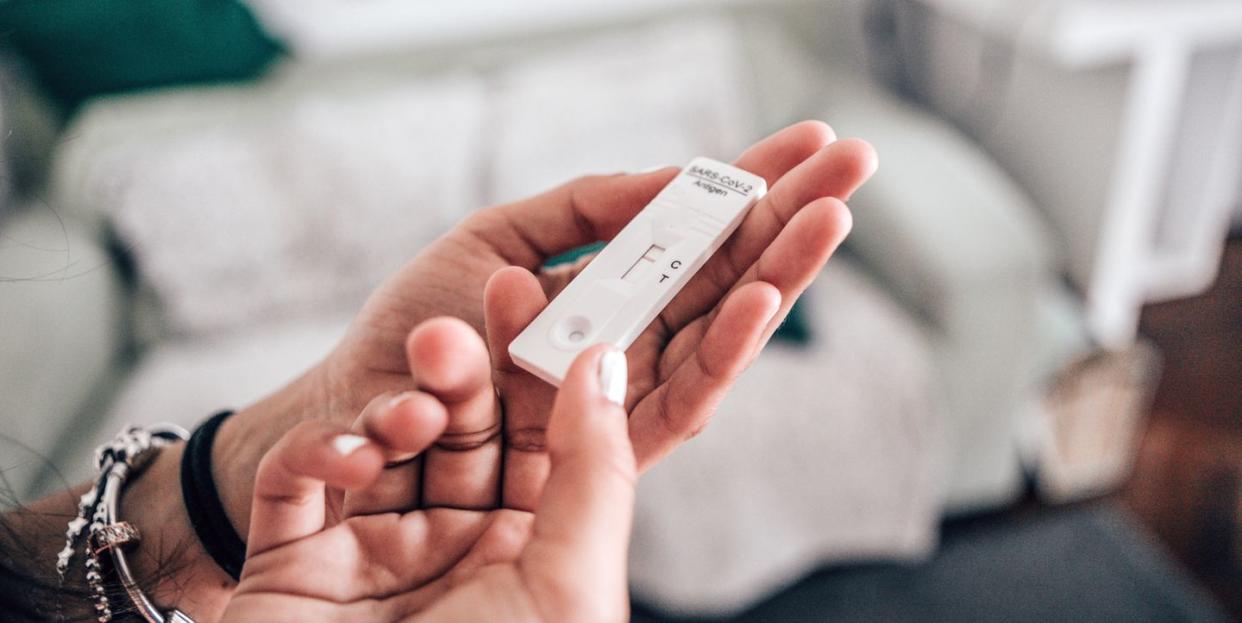What You Need to Know About Rebound COVID-19 After Paxlovid

President Joe Biden announced over the weekend that he tested positive for COVID-19 after recovering from the virus in what’s known as rebound COVID-19 after Paxlovid or “Paxlovid rebound.”
“Folks, today I tested positive for COVID again. This happens with a small minority of folks,” he wrote on Twitter Saturday. “I’ve got no symptoms but I am going to isolate for the safety of everyone around me. I’m still at work, and will be back on the road soon.”
Folks, today I tested positive for COVID again.
This happens with a small minority of folks.
I’ve got no symptoms but I am going to isolate for the safety of everyone around me.
I’m still at work, and will be back on the road soon.— President Biden (@POTUS) July 30, 2022
Biden’s Paxlovid rebound—which was also experienced by his chief medical officer, Anthony Fauci, M.D.—has raised a lot of questions about the anti-viral medication and why it can cause some people to have a “rebound” infection of COVID-19 after they get better. Here’s what you need to know.
How common is Paxlovid rebound?
This is a little tricky. Clinical trial results for Paxlovid found that rebound happened in 1 to 2% of patients who took the drug. But it seems to be a little more common than that in the real world.
“It’s unclear how common this effect is,” says Amesh A. Adalja, M.D., a senior scholar at the Johns Hopkins Center for Health Security. “It was not seen as an issue in the clinical trials but the real world experience with the drug seems to suggest that this is something that occurs with some level of frequency.”
In fact, the Centers for Disease Control and Prevention (CDC) issued an emergency health advisory in May to warn doctors about Paxlovid rebound, calling it “the potential for recurrence of COVID-19 or ‘Covid-19 rebound.’” In the advisory, the CDC called Paxlovid rebound “a recurrence of symptoms or a new positive viral test after having tested negative” when someone was diagnosed in the past two weeks.
“Why this is occurring is still something that needs an answer. It’s unclear how common this is with Omicron in general or in the high-risk population regardless of Paxlovid use,” Dr. Adalja says. In general, though, "symptoms tend to be milder with rebound," Dr. Russo says.
Here’s the thing: It’s possible to have rebound COVID even if you don’t take Paxlovid—and that’s something that happened to a few people in clinical trials for the drug, says Thomas Russo, M.D., professor and chief of infectious disease at the University at Buffalo in New York. “How much of this is Paxlovid or how much of it is that certain individuals just rebound is unclear,” he says. “It’s certainly not solely due to Paxlovid.”
Does Paxlovid make you feel better?
Paxlovid is an anti-viral medication that’s designed to shorten the course of a COVID-19 infection in people who are high risk for serious disease and help lessen symptoms.
“People that have taken Paxlovid tend to have a shorter duration of symptoms and feel better sooner,” Dr. Russo says. But, he adds, some people develop so-called “Paxlovid mouth” which is a metallic taste in their mouth while taking the drug.
Paxlovid rebound isn’t actually a reinfection, Dr. Adalja points out. “It is the same virus that the initial infection was caused by,” he says. And, Dr. Adalja says, you are contagious when you experience Paxlovid rebound. “There are reports of transmission occurring from those experiencing rebound so it is infectious virus that is being shed during rebound,” he says. Meaning, you have to isolate again when you experience the rebound, Dr. Russo says.
As for why this happens, that’s still being investigated. “It could be that the drug lowers viral load which then rebounds when the drug is not present because, perhaps, the immune response is blunted with the drug in the early stage,” Dr. Adalja says.
Who can take Paxlovid?
Paxlovid is designed to be taken by adults and children age 12 and older, the CDC says. It’s specifically authorized to treat mild to moderate COVID-19 in adults and children weighing at least 88 pounds who are at high risk to progress to severe COVID-19, be hospitalized, or die from the virus, per the Food and Drug Administration (FDA).
While Paxlovid rebound is a potential side effect of taking the drug, Dr. Adalja stresses that it’s an important tool to have. “The drug is working perfectly well at doing what it was designed to do: Prevent severe disease,” he says. “Reports about rebound should not dissuade high-risk individuals from taking this life-saving drug.” Dr. Russo agrees. "This should not keep people from taking Paxlovid," he says.
You Might Also Like

